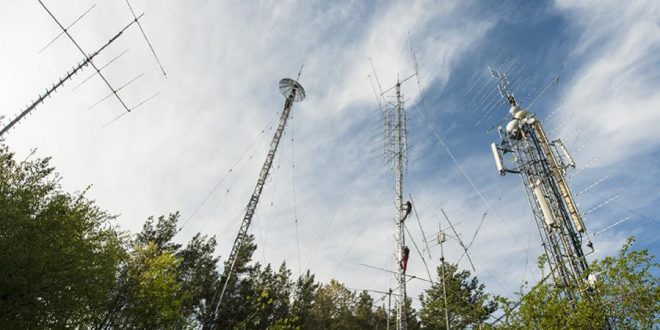While the majority of Amateur Radio operators choose only a few of the HF bands, below 30 MHz, to participate in contests, there are some broad-minded enthusiasts who go beyond this limit and have as much fun on VHF, UHF and SHF bands. This is a report from a small radio club near Prague, the capital city of Czechia, or Czech Republic, in Central Europe. I was allowed to visit the secluded site, almost classified, of OK1KZE club on one warm day in April 2019. The hill used to be an anti-aircraft gun station during the Cold War – today it is a Big Gun on all bands from 160 m to 23 cm.
The club exists since the 60s, but gained access to the present spot only in year 2001. A few years ago, they also acquired the short call sign OL3Z, following the fashion. Today there are some 15 members in the club and about 5 of them are truly engaged in the activities. Through friends and professional contacts, they often get scrapped cables, masts and components for free.
The hill, where the club station is located on, is called Čihadlo; its top is 385 m (about 1285 ft) above sea level. This elevation is not impressive and other Czech clubs, the main competitors, are located higher than 1000 m (3330 ft) in genuine mountains. The altitude of the VUSHF antennas is crucial for tropospheric propagation.
The focus of this club is on 144 MHz, 435 MHz and 1,3 GHz. The IARU Region 1 sponsors many regular competitions and the activity in Europe is very high. The prevailing paradigm of VUSHF contesting is to have several high-gain fixed antennas and switching them, instead of turning. This method is becoming popular in HF contesting as well
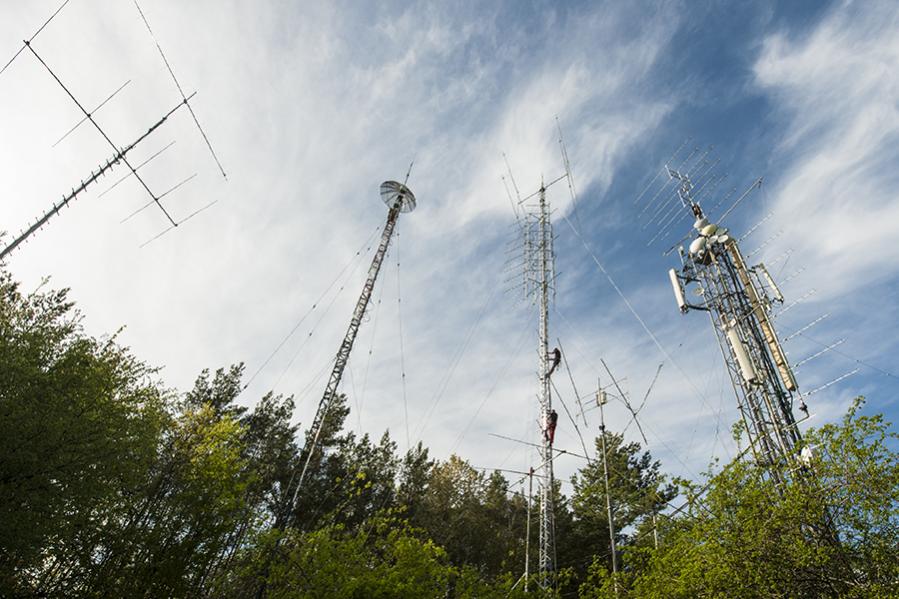
A view of the main VUSHF antennas at OL3Z near the radio shack. A couple of small HF antennas are also close by. On the left, a freestanding home-made needle with a 5-element 28 MHz Yagi, and a long 144 MHz stick, above it. The heavy-duty tower on the right is partially rented to a cellular phone company, which covers some of the electricity bills.
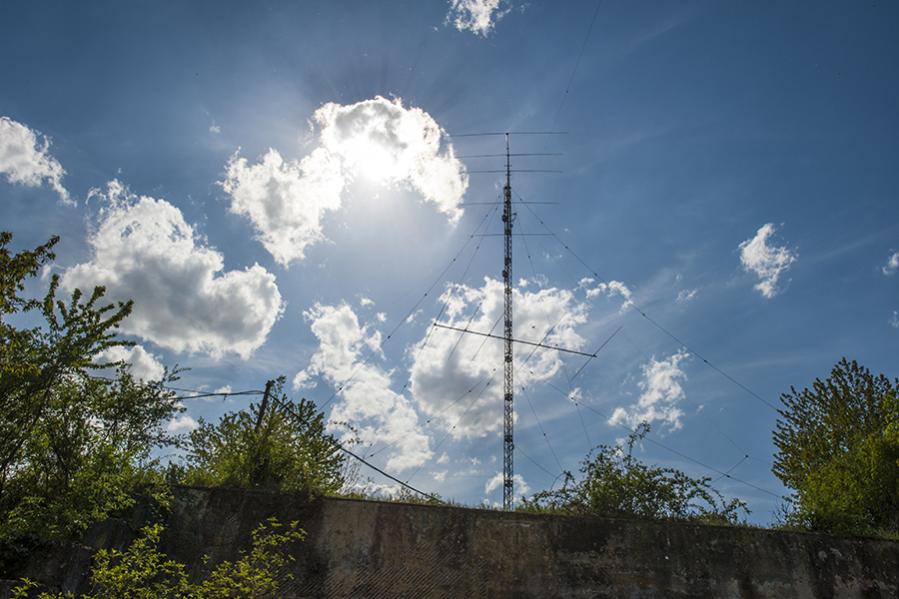
The 21 MHz array at OL3Z is comprised of two 5-element wide-spaced antennas. The lower one is fixed in the direction of North America, the upper one is rotary and can be in-phase fed with the lower one. This tower is about 250 m away from the radio shack, but using low-loss coaxial cables even on HF bands, provides good performance. This tower supports also a 160 m Delta Loop antenna.
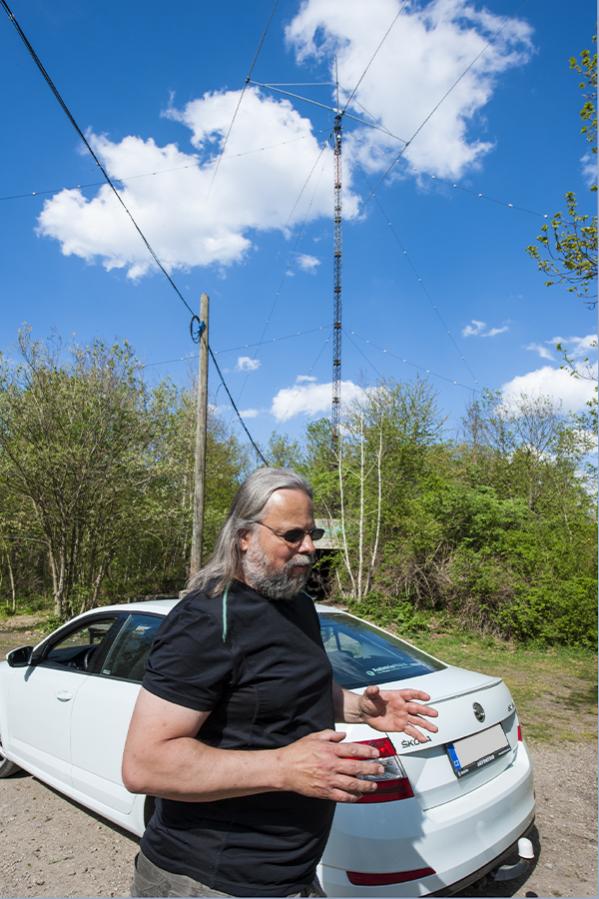
This is Miloslav, OK1VUM, the president of the club and the technical wizard. The antenna in the background is a full-size 3-element 40 m Yagi. This location is often used on 40 meters in the HQ network during the IARU HF Championship in July.
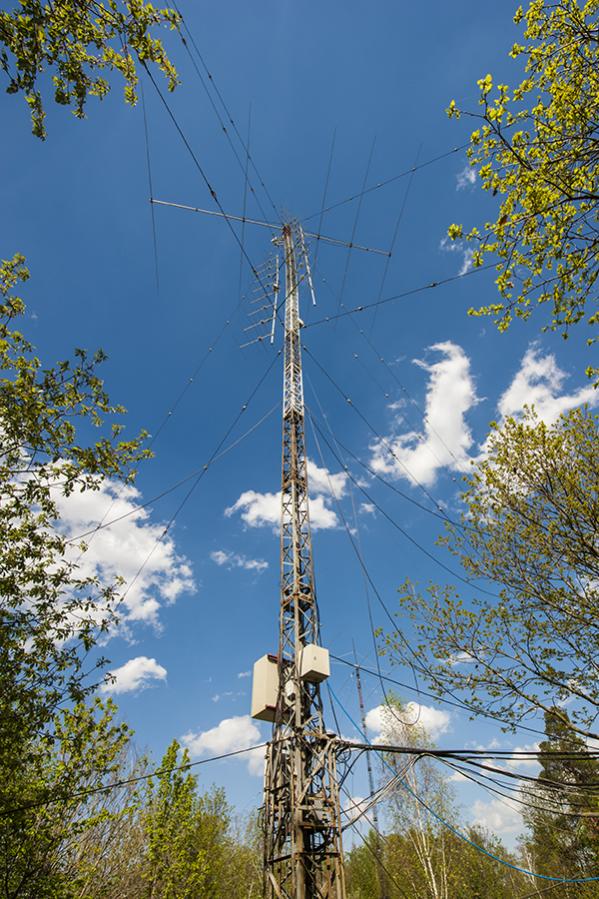
This is another remote tower at OL3Z with a 5-element monoband Yagi for 20 meters, and two stacks of 144 MHz antennas under it. These antennas are at over 400 m a.s.l. In the distance, the 7 MHz Yagi is visible.
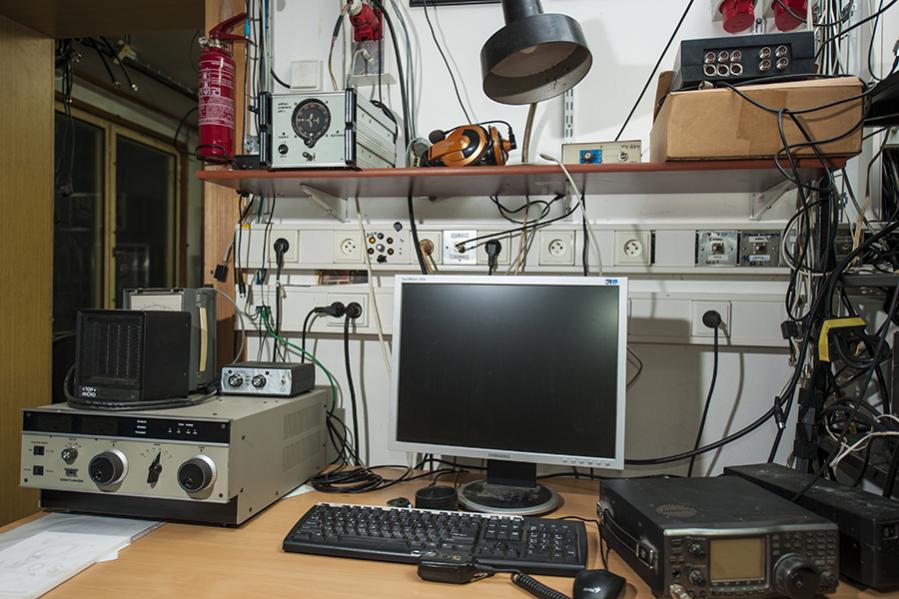
One of the operating positions at OL3Z. They do not invest in expensive and sophisticated equipment. Their approach to HF contesting is rather old fashioned. However, the call sign OL3Z can be found on top of the national scores in recent years in Multi-Operator and Multi-2 category in CQ WW CW and CQ WPX CW contests.
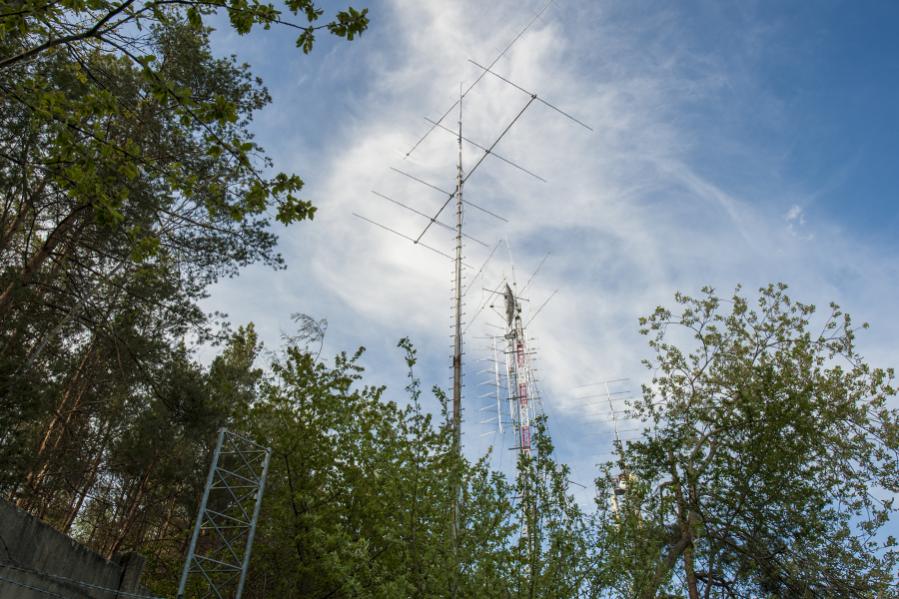
The 28 MHz antenna in the middle is not often used due to poor ionospheric propagation nowadays.
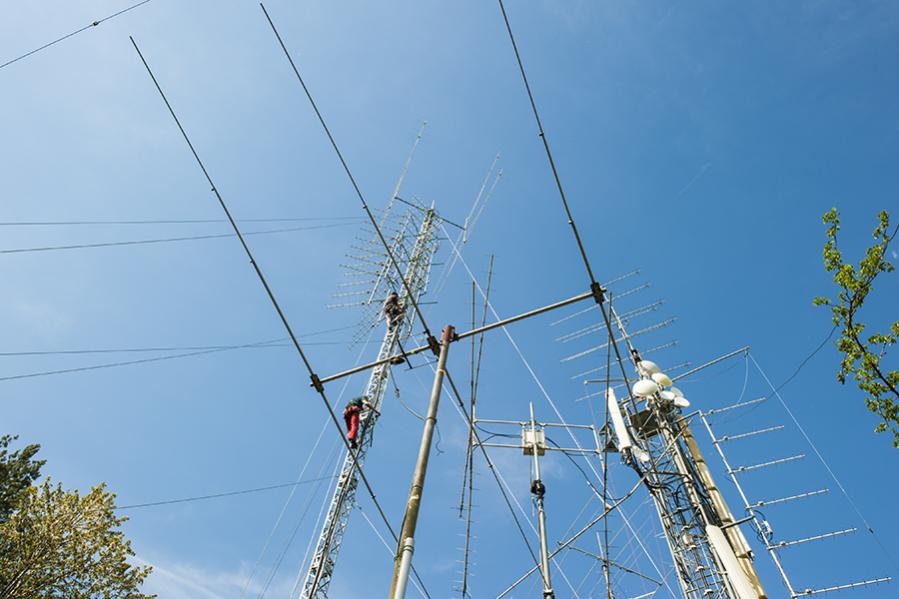
An auxiliary 28 MHz antenna up front against a forest of 70-cm arrays. The total number of antenna elements for 435 MHz at OL3Z is close to 800, including the rotary arrays. An multi-band HF antenna is also visible behind the tower with GSM antennas.
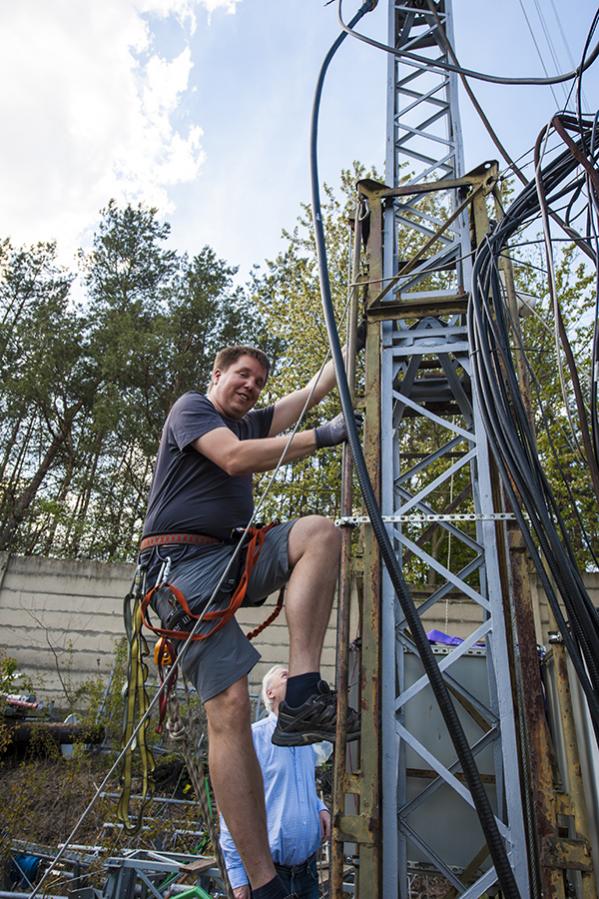
Jan, OK1COM, ready to climb the 34 m main tower. While I was there, the job was to connect cables to replaced 70 cm antennas and install a couple of 2 m arrays. The weather was perfect, no wind and sunshine.

The main antenna tower collapsed in March 2019 and a month later it looks like new – painted and with new antennas. The H-frame with 70 cm antennas on the right still shows some signs of the damage caused by the falling tower. The men at work are Jan, OK1COM – left, and Martin, OK1HMP, in red.
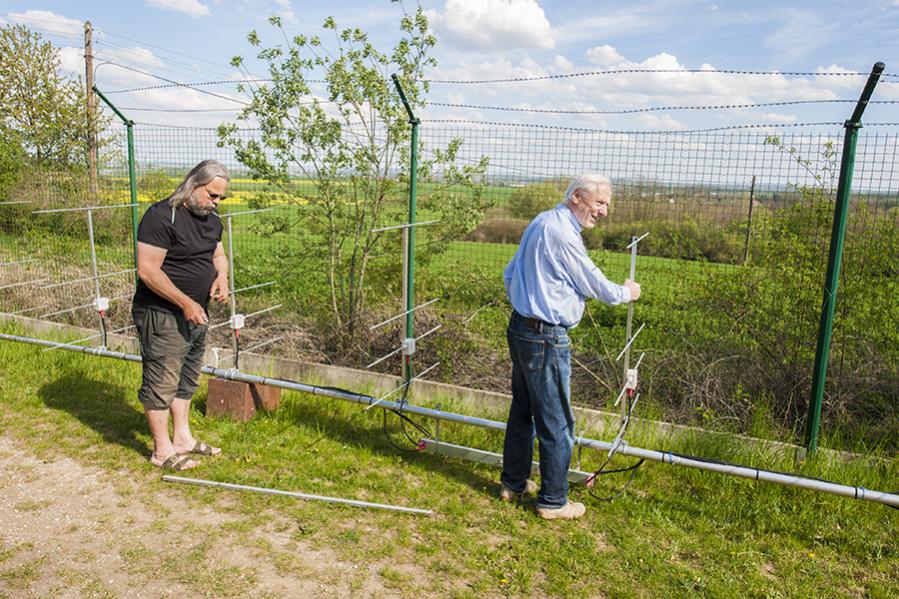
The last 144 MHz array to be attached to the main antenna tower is ready. Miloslav, OK1VUM, in black, and Vitek, OK1AXD, are about to carry the stack.
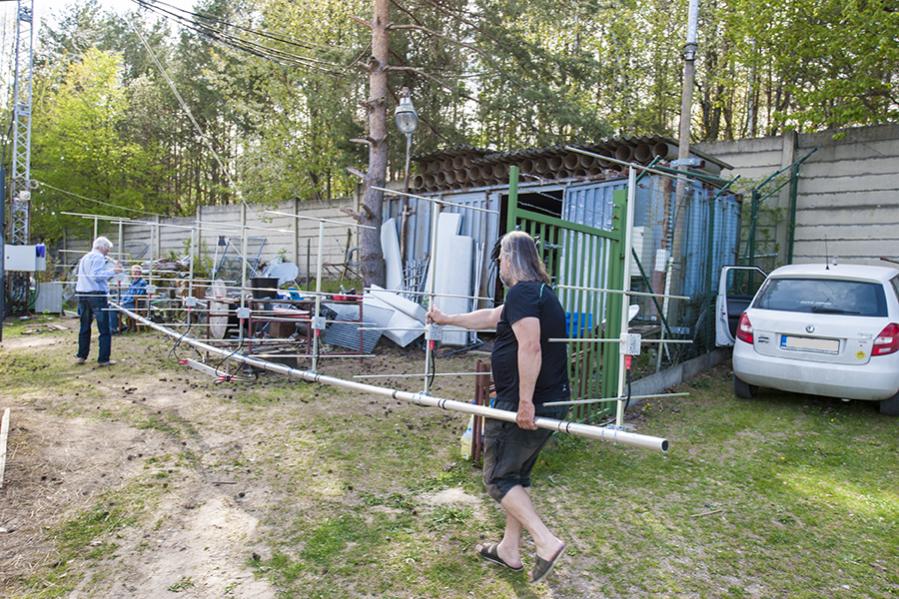
The VHF antennas are not always small and compact. The 8 stack of 4-element Yagi for 144 MHz is not easy to handle. OK1VUM and OK1AXD carry the final array to its destination. A week later, using these new, and old as well, antennas the team logged 735 QSO on 144 MHz during 24 hours of the Subregional Test on May 4-5, 2019.
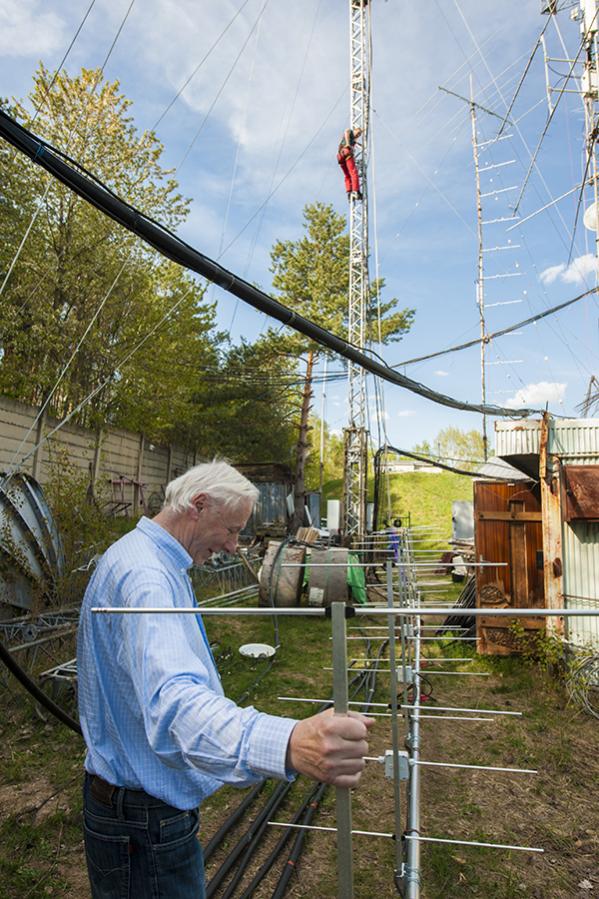
Vitek, OK1AXD, is one of the oldest members of the club and does not climb the towers. Ground service is also important.
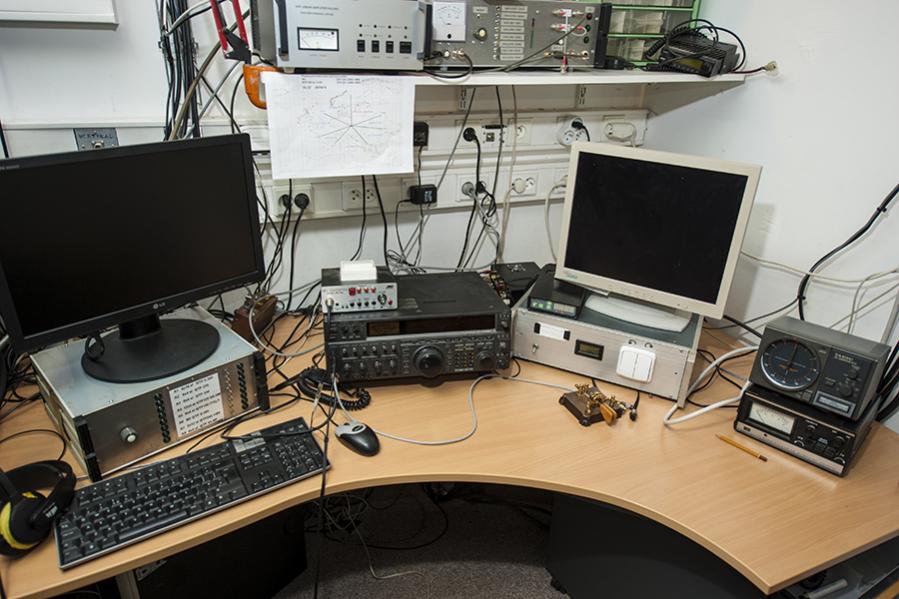
The 144 MHz operating position at OL3Z. There are two antenna switching boxes and two rotor controllers.
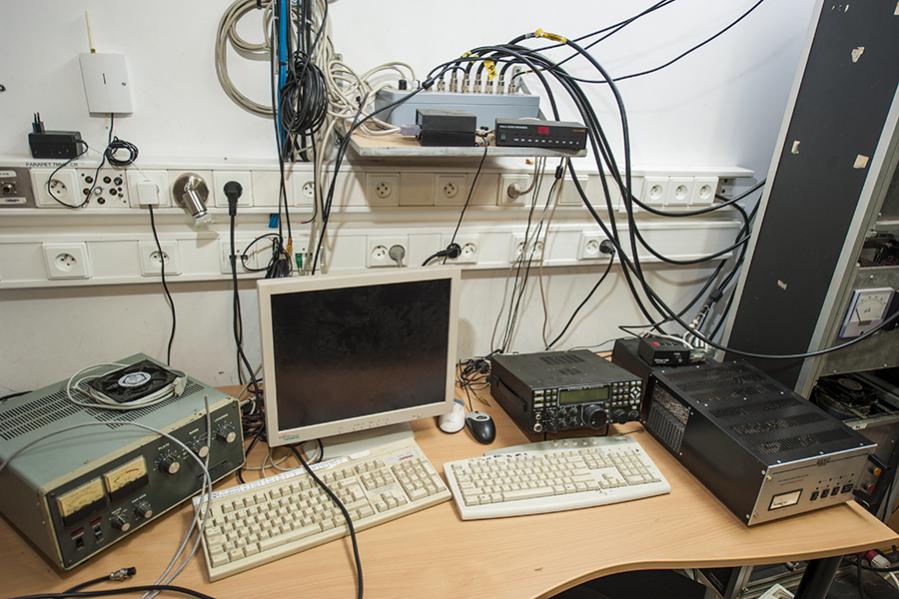
This operating position can be used on HF bands and VHF, when needed. No expensive equipment in sight, but it is the antennas that count.
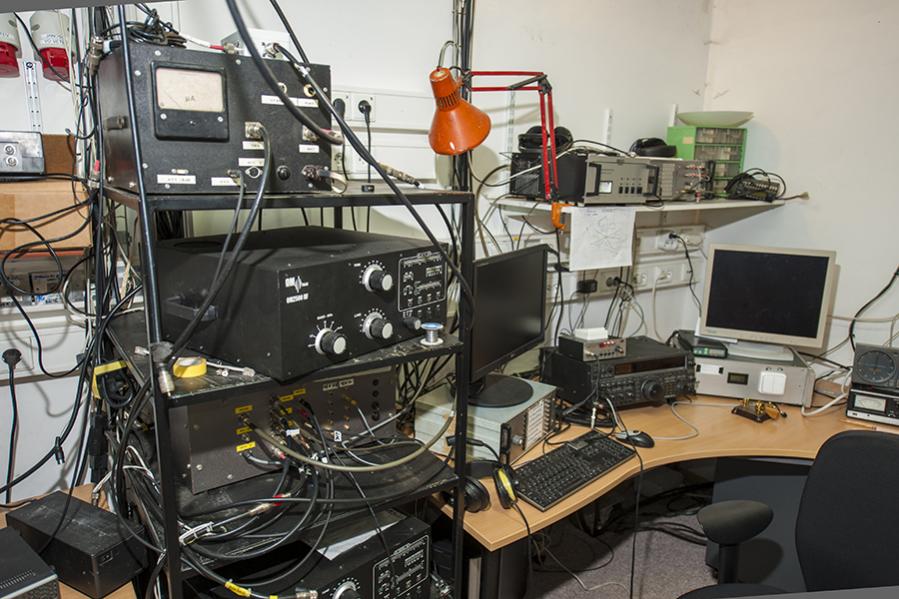
Some HF power amplifiers next to the 144 MHz operating position.
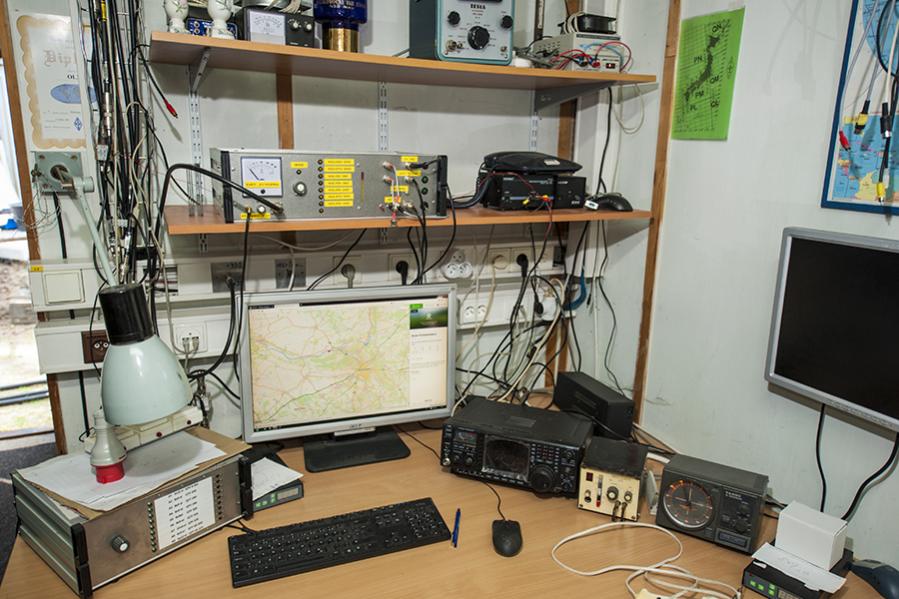
This is the favourite spot of the radio shack – the 435 MHz post with two antenna switching boxes and rotor controllers. During October 2018 IARU R1 Test they logged almost 500 QSO in 24 hours on this band.
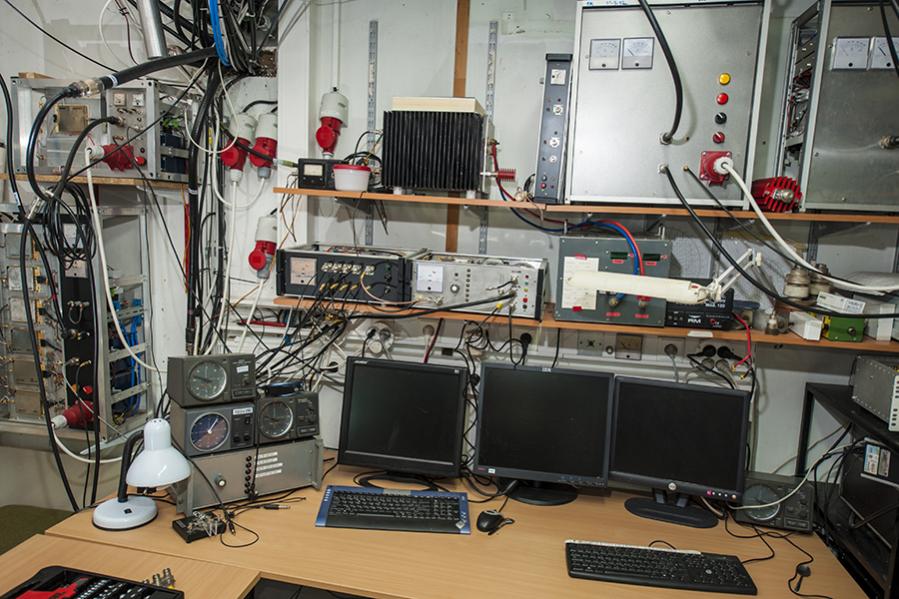
The 23 cm operating position. The antennas used on this band are rotary parabolic dishes. On the left, a Solid State Power Amplifier built of modified GSM modules delivers over 400 W output on 1,3 GHz.
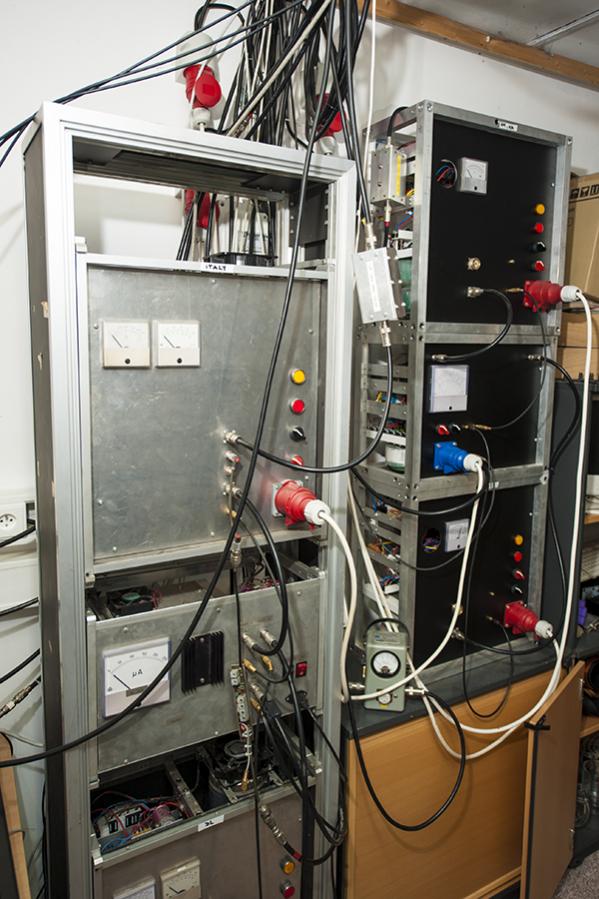
Power amplifiers and power supply units. Miloslav, OK1VUM, is the designer and constructor of most of the custom made equipment at the club.
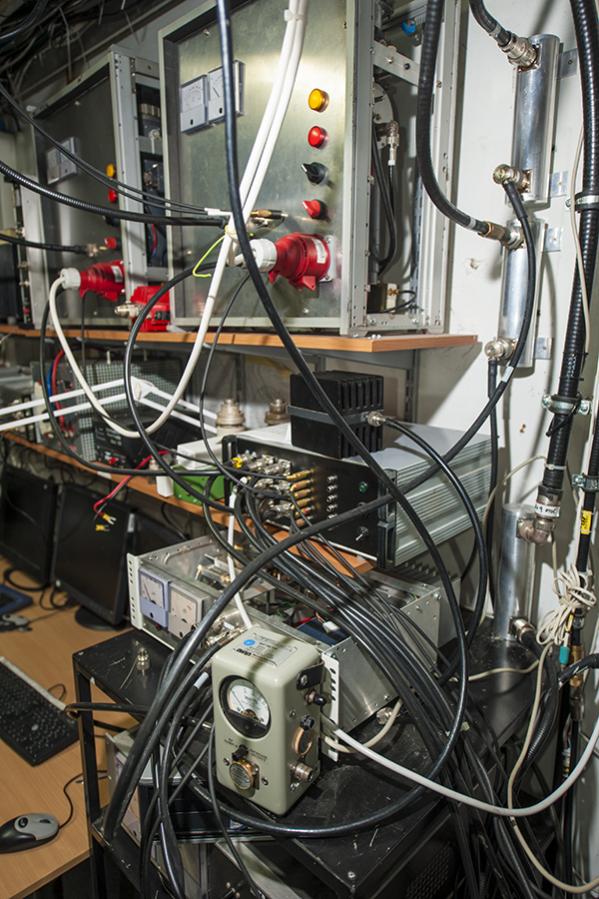
More amplifiers and switches, cables, dividers. It is a maze that only a few initiated and chosen people can deal with.
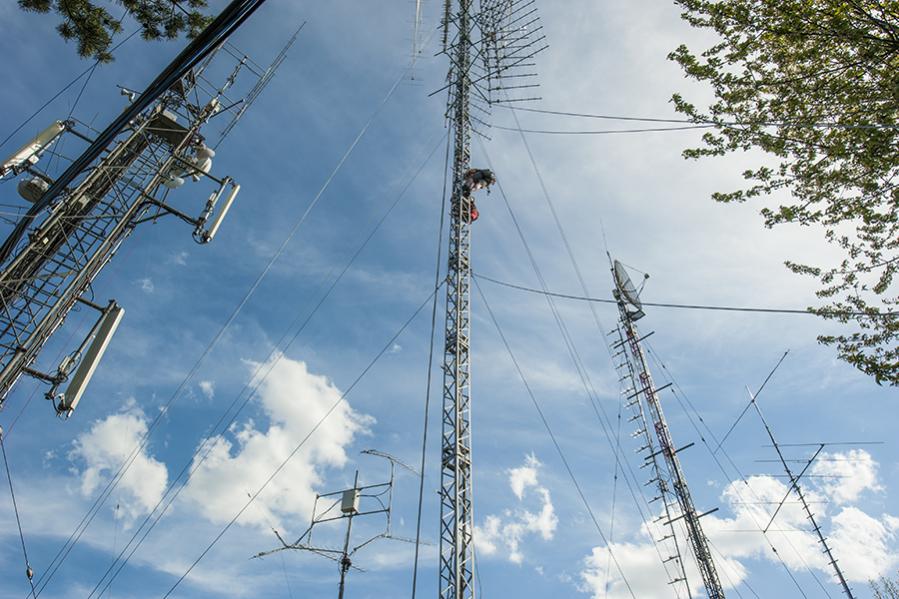
Time to say goodbye to OL3Z. The two guys – Jan, OK1COM, and Martin, OK1HMP, spent at least three hours in the mast while I was there. To be a successful radio amateur today you have to be an expert in many fields and have physical strength. Not only you must understand modern electronics and RF technology, computer science, software and hardware, mechanics and telegraphy, but recently also law and legal issues. A solution is to join a club and share the expertise. Together we can do more, and presumably better.
The purpose of this presentation is to show that our hobby has less known aspects. Thousands of Amateur Radio operators in Europe alone find it exciting to advance their know-how well above the 30 MHz edge. This can be attractive when the ionospheric propagation is disappointing. A pile-up on 70 cm is possible, for example. However, more advanced skills are required to build a competitive station for VUSHF and microwaves. The propagation of these frequencies can be surprising, not limited to the line-of-sight.
Text and photographs
Henryk Kotowski, SM0JHF
May 2019 https://dxnews.com
https://dxnews.com
 Organisasi Amatir Radio Indonesia Daerah Sulawesi Barat
Organisasi Amatir Radio Indonesia Daerah Sulawesi Barat
